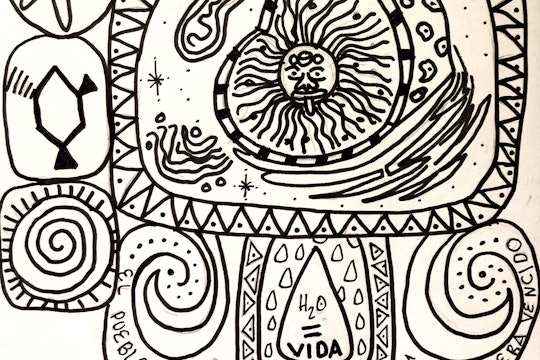

Produced in partnership with The Biota Project
A power list of the LatinX scientists who are changing the world
In celebration of LatinX Heritage Month, these are LatinX scientists shaping policy and research worldwide
In their own words, the Biota Project is "a mixed-media science communication and education organization with a grassroots approach for connecting underrepresented communities to symbiotic relationships in nature and society." The Biota Project and Massive Science have partnered to bring underrepresented voices in science to a broader audience.
In honor of LatinX heritage month (September 15 - October 15) and fast-approaching Election Day, The Biota Project and Massive Science are spotlighting a number of influential LatinX scientists and STEM professionals (Science, Technology, Engineering, and Mathematics) whose scientific work is making waves in the policy sphere.
The "scientific method" is a tool used to study and make inferences about the world around us. Scientific study is driven by human values; the topics that we study reflect our interests and many of us aspire to change or improve the world around us with our work. The scientists that we will be highlighting here are working to make a difference in their communities and are actively addressing issues that inform public policy.
Much of the laws and regulations set by our local and national governments are informed by the findings and principles of science. A key example of this was the 1954 Brown vs. Board of Education decision, which introduced racial desegregation of public schools, partially based on the findings of sociological research. The sociology study of Equal Opportunity Education was spearheaded by researchers at Johns Hopkins and Vanderbilt who found evidence indicating that segregation was associated with lower achievement among segregated disadvantaged minorities.
Most recently with the pandemic, health experts, and medical researchers are analyzing the infection rates of the virus in the US and discovering COVID-19 racial disparities among the population that need to be addressed. In a study using the medical records of Veteran Affairs, researchers compared the testing and mortality rates of covid-19 among white, LatinX, and Black communities. They found that LatinX and Black communities are experiencing higher rates of infections than white communities, particularly in the midwest where communities are less racially integrated.
This article highlights scientists and STEM professionals of marginalized identities who have contributed to research that informs legislative policies, judicial decisions, and our understanding of politically significant issues. In anticipation of this November’s general election, we will also continue coverage specifically geared towards political engagement to help you play a scientifically informed part in our democratic system.
Meet the Scientists
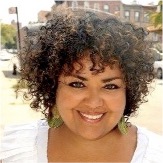
Elizabeth Yeampierre
Elizabeth Yeampierre is an internationally recognized pioneer in the environmental movement, creating a platform for oppressed communities in the fight against climate change. A Puerto Rican attorney with indigenous and African roots and born and raised in New York City, Yeampierre has pioneered a model of intergenerational, multicultural, and community-led organizing that is award-winning and effective. A leader in numerous organizations across the country, on the federal level, Yeampierre was the first Latina chair appointed to the EPA’s National Environmental Justice Advisory Council, and was also a member of the National Environmental Health Sciences Advisory Council.

Nicole Hernandez Hammer
Nicole Hernandez Hammer is a sea level researcher, climate change expert, and environmental justice advocate. As an important community activist and climate-science expert, Nicole focuses on raising awareness on the impact of rising sea levels and educating Latinx and low income communities on climate change. Growing up in Guatemala, she remembers the difficulty of accessing clean water in her hometown. She migrated along with her parents to the US when she was four and later after graduating from high school, went on to receive her MS in Biology and MBA from Palm Beach Atlantic University. Nicole has worked with Moms Clean Air Force, an organization whose mission is to protect the clean air and water their children need. Due to her climate change expertise and dedicated activism, Nicole was invited by Michelle Obama to the 2015 State of the Union address. Most recently, she has been working with Clean Energy States Alliance in Rhode Island on solar projects for low and moderate income communities.
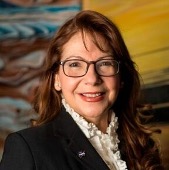
Adriana Ocampo Uria
Adriana Ocampo Uria is a planetary geologist and director of the Science Program at NASA. Born in Barranquilla, Colombia, Ocampo emigrated to California in 1970 and completed her Bachelor's degree in Geology at California State University, Los Angeles followed by a Masters degree in Geology at California State University, Northridge and a PhD in Planetary Sciences from the Vrije Universiteit in Amsterdam, Netherlands. She and her colleagues were the first to identify a ring of "cenotes," or natural pits that are the only surface impression of the buried Chicxulub crater, which is the impact crater underneath the Yucatán Peninsula in Mexico commonly associated with the Dinosaur extinction 66 million years ago!
The Science Program at NASA forms a symbiotic relationship with Space Policy in that (1) the work and research being done by NASA helps inform updated versions of the United States Space Policy and (2) is funded by federal budgets allocated to achieve the goals in the US Space Policy. Space Policy covers scientific uses as well as civilian and military aspects of exploration and flight. Since the founding of NASA in 1958 Space Policy goals have revolved around (i) Energizing competitive domestic industries, (ii) Expanding international cooperation, (iii) Strengthening stability in space, (iv) Enhancing mission-essential functions, (v) Pursuing human and robotic technologies, and (vi) Improving space-based Earth and solar observation (National Space Policy).
Adriana received the Woman of the Year Award in Science from the Comisión Femenil in L.A. in 1992 and was named one of the 50 Most Important Women in Science by the Discover magazine in 2002. In 2019, she became a Geolatinas Advisor, a group dedicated to embrace, empower, and inspire Latinas to pursue and thrive in careers in Earth and Planetary Sciences.
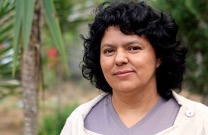
Berta Caceres
As a fearless environmental leader in her country of Honduras, Berta Caceres was a prominent environmentalist and firm advocate that indigenous rights and human rights are inextricably linked with the environment. In 2015 she won the Goldman Environmental Prize for a campaign that was successful in pressuring the world’s largest dam builder to end a project on the Gualcarque River that would have “jeopardized the water resources and livelihood” of the surrounding land and people. Unfortunately, Caceres was assassinated for her beliefs and her work to protect the people of Honduras.
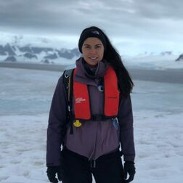
Paola Tello Guerrero
Paola Tello Guerrero born and educated in Colombia, is a physicist with experience in the hydrocarbons sector in Europe and Colombia. She is passionate about initiatives related to the energy transition, sustainability, and education. She was a 2018 participant of the largest Antarctic expedition of women scientists led by Homeward Bound, a global initiative that seeks to create a network of 1000 women scientists over 10 years working around climate change. She also is the founder and strategy leader of "Antarctica for the Brave," #AntartidaParaValientes, an educational project for children that combines climate change and equality and promotes the passion, curiosity, and love of children for science, penguins, and Antarctica. The organization uses three tools to create a positive impact in our society; educational innovation, play, and the integration of science, art, and technology.
Research on hydrocarbons plays a major role in creating policies and regulation around oil and gas exploration and the United States federal role in these policies focuses primarily on environmental protection through the Environmental Protection Agency (EPA). However, Paola’s work also has a huge impact on policy around education. The National Science Education Standards (NSES) are used as a criteria to judge the science education system and provide schools with necessary financial and intellectual resources (National Research Council, 1996); however, k-12 education of students in the United States is not the responsibility of the federal government but, rather, is controlled by the individual states. And thus, the NSCS interpretation and implementation can be very different across the country.
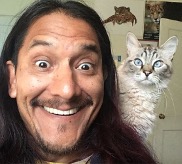
Sergio Avila
"I first encountered Sergio Avila at the Moab Festival of Science Panel Discussion “Rethinking Science in the Southwest” that took place in mid-September. The Moab Festival of Science is traditionally a multiple-modality celebration of science, with particular emphasis on the science of the Colorado Plateau — that beautiful desert region that lies in the intersection of four U.S. states (Utah, Arizona, New Mexico, and Colorado). This year the celebration was conducted virtually due to the current coronavirus pandemic. I logged on to the online panel with no expectations; but, Sergio immediately gave me life when he introduced himself, recognized the Tohono O’odham and Yacqui peoples on which land he stood in Tuscon (AZ), and greeted us with a racist quote by beloved naturalist John Muir.” — Daniela Zarate, The Biota Project Member
Sergio, a wildlife biologist from the Northern Mexican state of Zacatecas, has done considerable conservation science and service in efforts to protect the endangered species of the Sonoran desert that have been seriously impacted by the ecological (and moral) disaster that is the U.S.- Mexico border. Such species include such culturally-significant animals such as jaguars, ocelots and monarch butterflies. Sergio is now a regional Southwest outdoors coordinator for the Sierra Club where he seeks to use his privilege and position as an advocate for issues at the intersection of social justice and environmental justice.
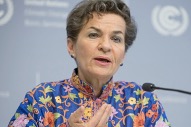
Christina Figueres
The accomplishments of the historical Paris Climate Agreement was largely due to Christina Figueres. In 2010, Figueres became the Executive Secretary of the United Nations Framework Convention on Climate Change (UNFCCC) and became involved in international climate change negotiations. She was determined to bring the world to a consensus and implement a regulatory framework for carbon emissions that everyone could commit to. She successfully directed a series of annual negotiations across the world that culminated in the Paris 2015 Conference of the Parties (COP21), at which the Paris Climate Agreement was signed. Figueres continues to push the world towards increasing climate protection like for example, she is organizing Mission 2020, a global initiative to have world carbon emissions begin decreasing by 2020.
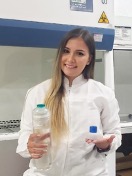
Maria Alexandra Tamayo
Maria Alexandra Tamayo is an inspiring Colombian expert in Nanotechnology and materials. She is currently 25 years old and has already developed a groundbreaking invention to help address the need for clean water. Maria Alexandra wanted to help Colombians living in rural areas and poorer communities have access to the clean water they desperately need. She developed the NanoPro, a device that can eradicate fungi, viruses, and bacteria in the water without compromising its taste, smell and color. The device is also more affordable and sustainable than the current water treatment in Colombia as its need for maintenance is minimal and does not require energy to work. For this creative innovation, Maria Alexandra was named as one of the winners of the Latin American Innovators under 35 in MIT Technology Review.
